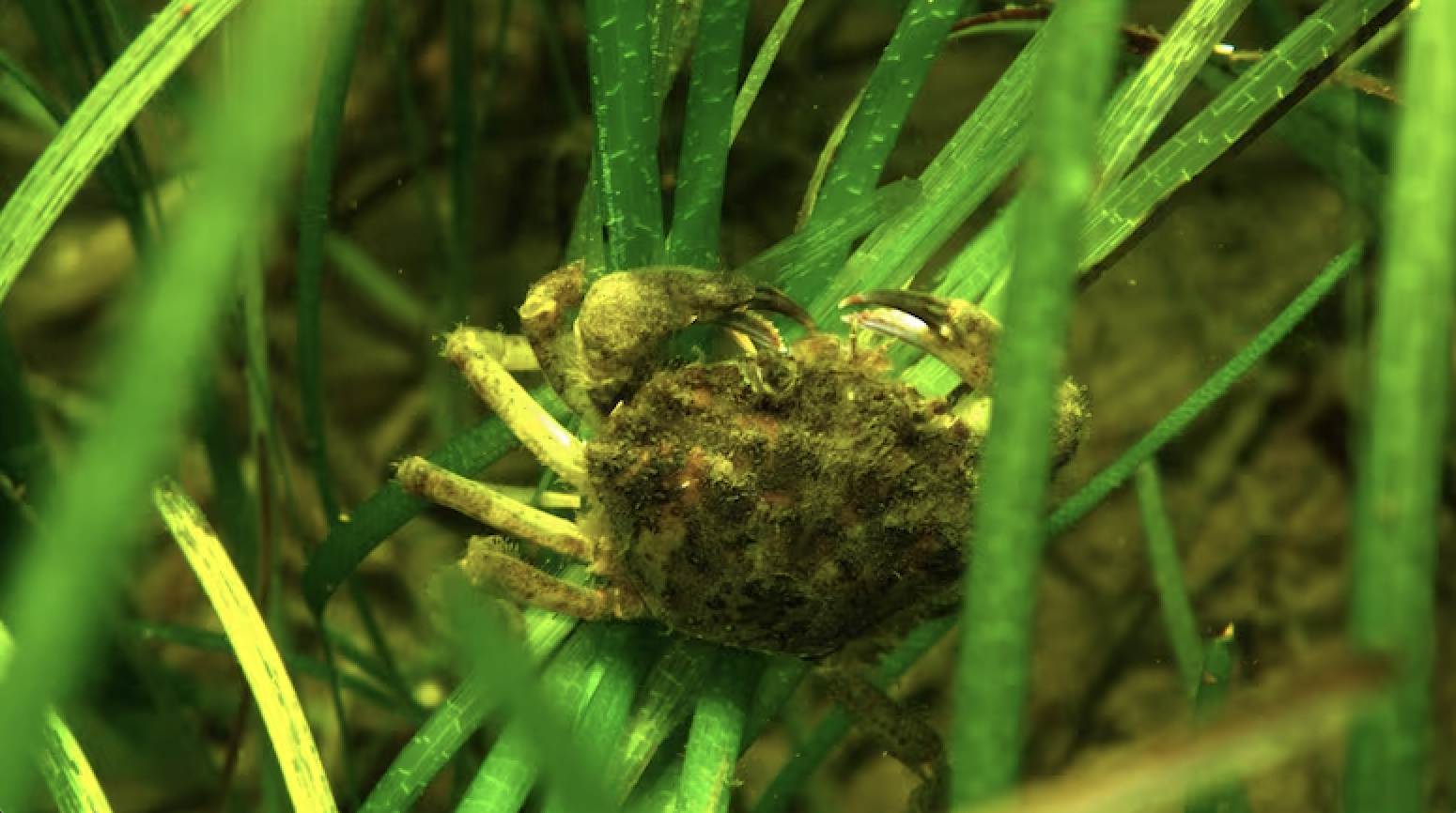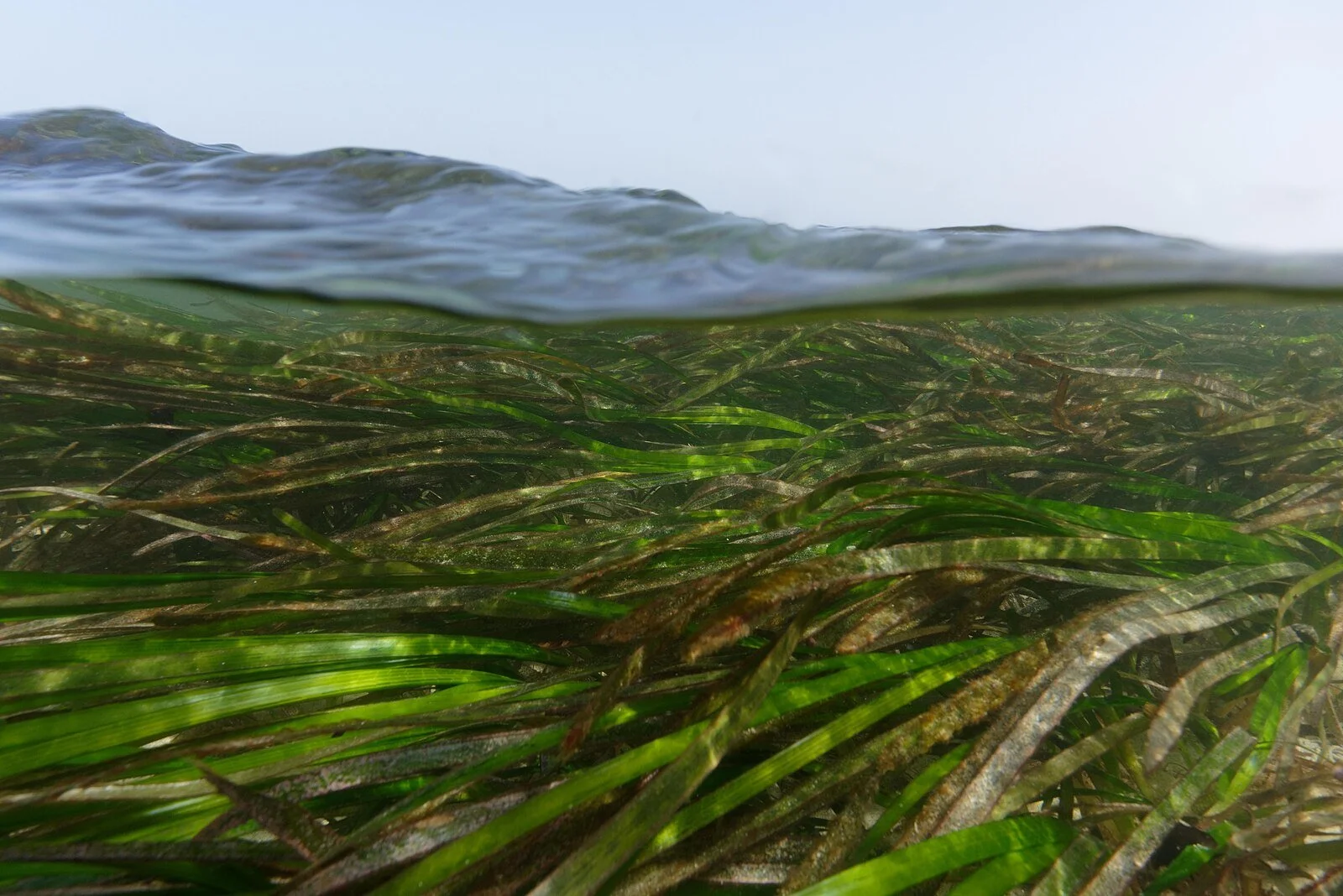Green Crabs and Eelgrass
How does an invasive species threaten a vital ecosystem and why is eelgrass so important?
Green crab (Carcinus maenas) is an invasive species, with a native range from North Africa to Northern Europe. In their native range, green crab rely on common eelgrass (Zostera marina) for shelter, food, and protection like many other species. However, in their native range green crabs have natural predators that keep populations in check. Outside of Europe and North Africa, green crab is considered an invasive species and poses a threat to a wide variety of eelgrasses, including common eelgrass that’s found on both coasts of North America. In this blog post, we explore why invasive green crabs are such a big problem for eelgrass in North America.
Green Crab’s Invasive Impact in North America
Green crabs destroy eelgrass while foraging for food and burrowing for shelter. When green crabs dig for clams or worms, they slice and uproot eelgrass. Green crabs also burrow into eelgrass beds for shelter and protection, which can disturb the plant. Current studies suggest green crabs could be a major force behind declining eelgrass in New England and Eastern Canada. Green crabs also pose a major threat to eelgrass on the West Coast of the US and Canada.
That being said, green crabs aren’t the only threat to eelgrass. In the Chesapeake Bay (which is a bit south of green crab’s invasive range), researchers found that water quality, water clarity, and rising temperatures are major stressors for eelgrass. Invasive tunicate species have also been found to weaken eelgrass shoots and reduce coverage. Coastal development (from dock shading to physical disturbance) is also a stressor for eelgrass. Nutrient runoff and pollutants also impact these vulnerable ecosystems.
So why is eelgrass so important?
Nursery Habitat
Eelgrass is where many fish and shellfish spend their first phase of life, sheltered by eelgrass from ocean currents and predators. Fish like salmon, flounder, and Pacific herring all rely on eelgrass in their early life stages.
Shelter & Feeding Grounds
Eelgrass provides shelter and habitat to a wide variety of fish and shellfish. Migratory birds and turtles rely on eelgrass as a “rest stop” where they can regain strength in a sheltered environment and feed. These lush meadows are filled with habitat complexity and offer protection from storms and waves.
Storm Protection
Eelgrass also provides storm protection to humans and the intertidal zone (where land meets sea). Eelgrass buffers waves and stabilizes sediment, protecting coastlines from erosion and lessening the impact of storms on coastal communities and intertidal ecosystems such as beaches, estuaries and rocky shores.
Carbon Sink
Eelgrass is what's known as a "carbon sink" and helps mitigate climate change. Carbon absorbed from the atmosphere is stored in plant tissues and underlying sediment. When the eelgrass plant dies, much of this carbon then makes its way to the seafloor, where it decomposes slowly due to a lack of oxygen.
A 2022 study found muddy sediment seagrass (often eelgrass habitat) has an even higher potential for carbon storage.




